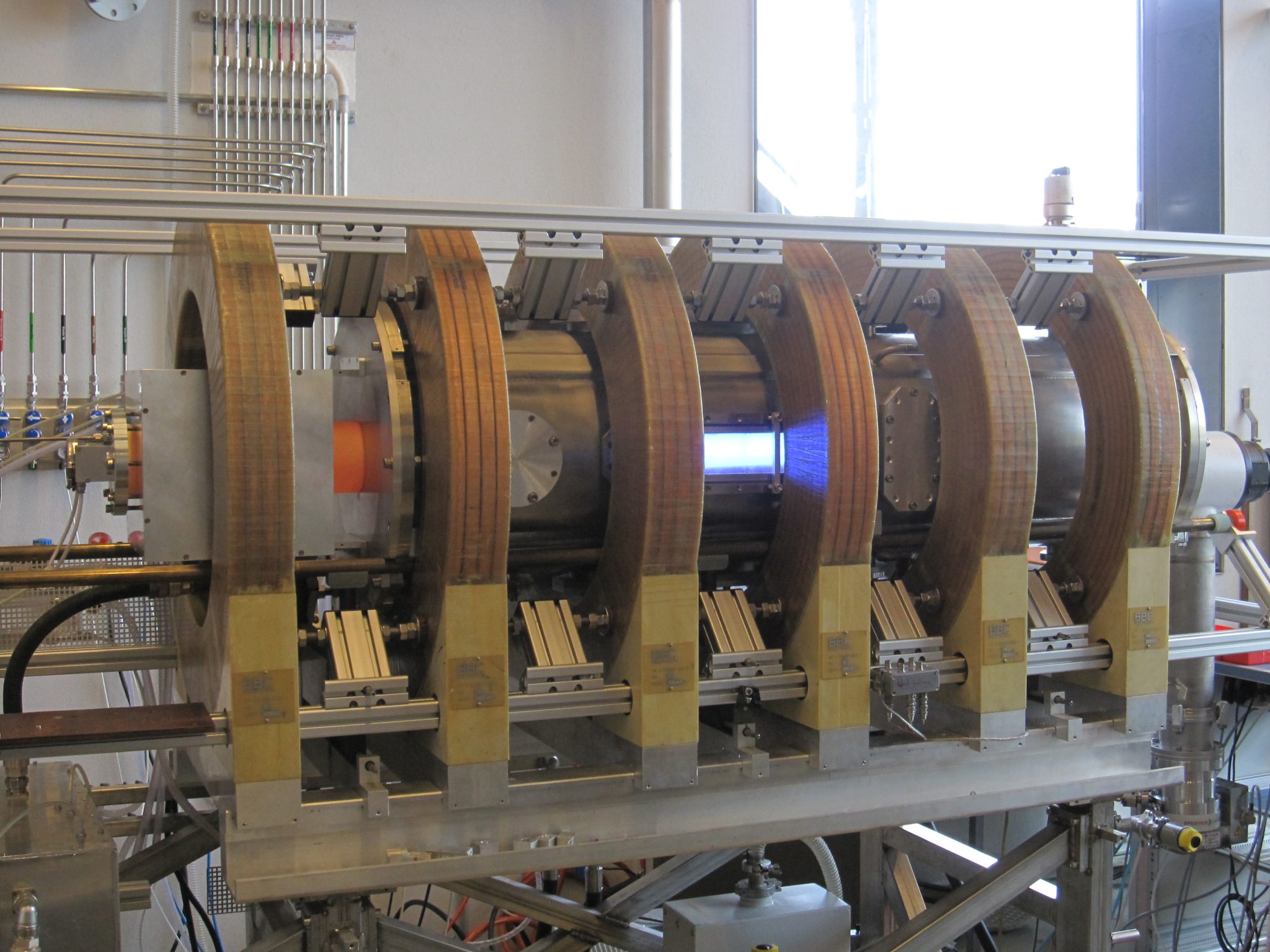
In collaboration with CEA-Cadarache and Helyssen Sarl, we are developing a 10 kW helicon plasma generator for neutral beams (NB) for the next generation of fusion devices, such as DEMO. The 10 kW helicon plasma generator is an intermediate step towards larger helicon powers, which will allow investigating the main technology and physics issues related to high power helicons. Our helicon source will be installed on the Cybele device at CEA.
The ability to obtain high plasma density with high ionisation rate and a much higher power efficiency than inductively-coupled plasma sources makes helicon sources an interesting option as plasma source for Cybele. Helicon sources have been extensively studied and they are proven to be very efficient for high-density (1012 – 1013 cm−3) plasma production with moderate injection power. Historically, they have found a wide range of applications, including semiconductor manufacturing and ion thruster system. Recently, they have been considered for nuclear fusion applications and proven to be a very promising candidate as plasma generator for negative hydrogen ion sources for ITER. In this context, helicon sources have the following advantages over traditional inductively coupled sources:
- reduced required RF power, leading to increase operational domain;
- stable operation at low pressure (< 1 Pa), reducing negative ion losses by electron stripping;
- lower electron temperatures, resulting in higher efficiency of negative ion production;
- high degree of molecular dissociation in hydrogen plasmas.
At SPC, we are studying our 10 KW helicon plasma generator on the Resonant Antenna Ion Device (RAID). The helicon source is installed on a large cylindrical (diameter: 0.4 m, length: 1.8 m) vacuum chamber, equipped with 6 magnetic coils allowing the generation of an axial magnetic field up to approximately 500 Gauss. The use of this relatively large chamber allows several types of boundary conditions for the helicon discharges to be tested (open, semi-open). Furthermore, the vacuum vessel is made of separate parts, which can be easily disassembled thus allowing easy diagnostic access. First tests include operation with Hydrogen and Deuterium gas at different pressures, magnetic field and radiofrequency power levels, spectroscopic measurements of the H/D dissociation rate and Langmuir probe measurements of electron density and temperature profiles. Stable operation in both Hydrogen and Deuterium are obtained for the working nominal conditions required in the Cybele source, namely 0.3 Pa of pressure and approximately 120 Gauss of magnetic field.
Embed of video is only possible from Mediaspace, Vimeo or Youtube